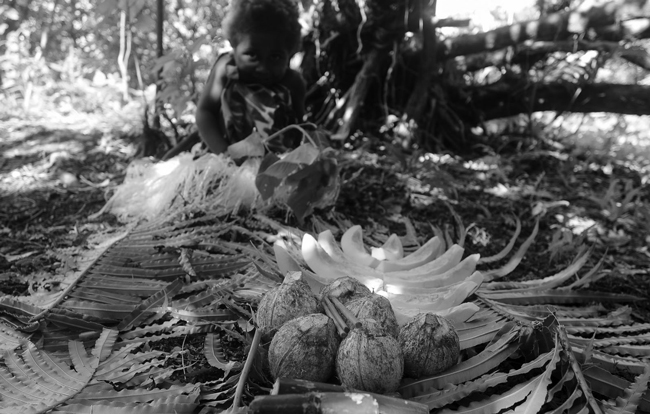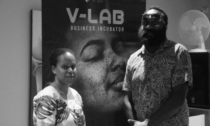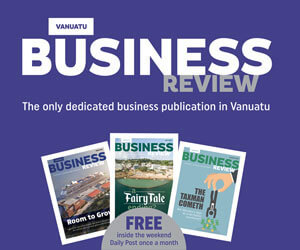VANUATU TOURISM POST COVID-19
January 29, 2022 11:00 pm | Posted in Features | Share now TwitterFacebook
The Ministry of Health released its Road Map for the Safe Reopening of Borders in December 2021. It outlined a proposed 3-Phase approach for the re-opening of Vanuatu’s border. The purpose of this Road Map was to define Health Measures to reduce the risk of importation, spread and impact of COVID-19 during the phased re-opening for quarantine free entry.

Despite the absence of clear timelines, the proposed milestones for the phased re-opening were as follows.
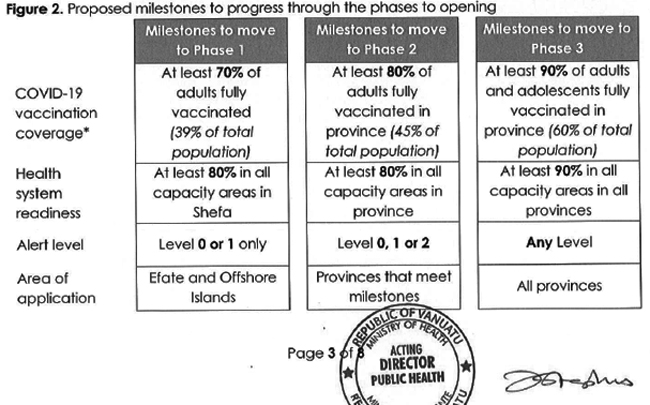
Since the release of the Roadmap, the Omicron variant of COVID-19, a much more contagious but less virulent strain has swept across the world resulting in increased pressures on Hospitals and Health facilities worldwide. Watching all this unfold has been Vanuatu’s long suffering Tourism and Hospitality sector.
Maintenance of Tourism Facilities
Since the border closed, many tourism-based businesses have closed completely. Some have been mothballed but require substantial capital expenditure to resurrect their facilities. Others have been operating under limited capacity. The Vanuatu Business Review spoke to a number of participants in the Tourism sectors.
All of the remaining operating businesses interviewed have continued to maintain a minimum level of repairs and maintenance of the assets and equipment. Some have been used as part of the quarantine requirements for arrivals in to the country necessitating some form of upkeep for rooms and support facilities. The small to medium sized businesses appear to have coped better due to the lower levels of expenditure required. The larger resorts have plant and equipment that have not operated since the borders have closed and need complete replacement or major maintenance, in particular large resort style swimming pools and the filtration systems that are needed to maintain the pools.
All the businesses that remain operating have already been incurring the minimum necessary expenditure to keep the facilities in good condition and have indicated preparedness to invest in their facilities. However, most of these plans are dependent upon the re-opening of borders and the return of tourists.
Those that have continued to operate have been funding their ongoing maintenance from a combination of shareholder capital and savings, ongoing cash flows from their scaled down operations, and with support from banks. The 14 day quarantine requirements of arrivals has helped cover operating costs of some resorts, with the smaller enterprises being able to cope better due to lower cost structures. In addition to this, the Vanuatu Government through the Department of Tourism has been offering financial assistance, under the Tourism Business Support Program, in the form of grants to cover costs associated with cleaning, maintenance, gardening, security, safety and utility bills.
There will be no planning for the refurbishment of Facilities and the marketing without a clear Timeline for the phased re-opening of borders.
The Vanuatu Government has mentioned that it would like to consider the commencement of phased re-opening at the end of March 2022, when it is anticipated that vaccination rates will reach the targets of 90% and 70% for first and second doses of the vaccines.
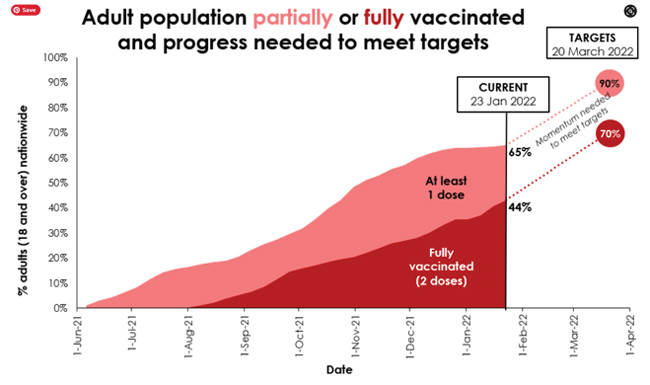
Many observers and commentators have remained skeptical about the proposed March commencement of phased border re-openings, with the worldwide spread of OMICRON especially in Australia. There still remains an absence of a definitive timeline for the re-opening of borders
Any clear timeline for the re-opening of borders, will enable tourism businesses to put in place plans for the capital expenditure required to bring the standards of their facilities back to pre-COVID levels. In addition to this, marketing plans need to be put in place. However, all respondents to our questions clearly stated that without a clear timeline for re-opening of borders, no plans would be made to prepare for the arrival of overseas tourists. It is evident that there is a reluctance to incur expenditure without a timeline for the phased border re-opening. An indicative date would provide a basis for operational planning and marketing. Some hotels and resorts have been partially operational during the period and the transition to being fully open would not require much effort and resource.
When asked about how long it would take to be fully operational, the respondents gave varying timeframes between being ready immediately to 6 months. The average time period for this was 3 months.
Re-Staffing is the Major problem
When borders closed, many that were employed in the tourism sector lost their jobs. The Economic Stimulus Packages offered by the Government has provided some degree of buffering and some jobs have been retained but many former staff, without income to support families have sort employment elsewhere. The RSE and SWP programs have been able to fill this gap and whilst it has greatly assisted those families that needed the income, this will be the largest problem faced by the Tourism Sector. Many personnel who were past employed in the Tourism and Hospitality sector have now left Vanuatu on RSE and SWP programs.
The big questions is, where can the Tourism Sector find qualified and trained staff to fill the positions needed when borders re-open when many have left to New Zealand and Australia on 3 year contracts?? This has raised concerns that even if borders re-open there is a lack of available staffing to fill all the positions needed due to the exodus.
The majority of the tourism businesses who have been able to navigate through the border closures and downturn in the economy by prudent management of their businesses will be able to rebuild their facilities. The biggest problem is with human resources. The problem has already seriously affected other businesses who are not in Tourism with technically trained and qualified personnel giving short notices to their employers once approval is granted to leave on the RSE/SWP contracts. There is pressure on employers to offer higher salaries to retain qualified staff while trying to manage their businesses with lower revenues.
The Vanuatu Government has responded to these concerns through the launching of the www.employmentvanuatu website. The website was created to provide an online marketplace for employers seeking staff and people looking for work, but critics have said that this is well and good if there were active participants looking for work. Time will tell.
The VTO is ready to promote Vanuatu as a Destination
Vanuatu Tourism Office has a marketing plan in place that is ready to be implemented once borders re-open. This was communicated to the VBR when asked on what plans were in place. The keys points in their response were as follows.
•Recognition that the core markets for tourists are still Australia, New Zealand and New Caledonia
•The focus of the marketing campaign will be Answering the Call of Vanuatu with more adventure, remote and challenging experiences.
•The VTO Head office will continue to maintain strong relationship with international marketing partners
•The Vanuatu Government has committed over VT250m for marketing, promotions, digital and research intelligence objectives, and with the assistance of NZ Ministry of Foreign Affairs and Trade, additional budget support to bring the total budget investment to over VT400m over 2 years.
Conclusions
Post COVID Tourism will see a sector that has come out of the pandemic changed for better or worse. The smaller players in the market appear to have managed the situation better than the larger resorts who have had much larger facilities to maintain and higher staffing needs. Whether the larger resorts are willing to incur the large investments needed to refurbish and renovate their facilities are uncertain. Without a clear timeline for the phased border re-opening and the problems of re-staffing, the only certainty here is that there will be mountains to climb for the Tourism Sector to arrive back at Pre COVID levels even with the support of the government.
